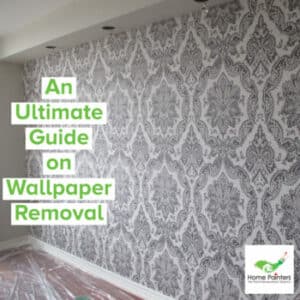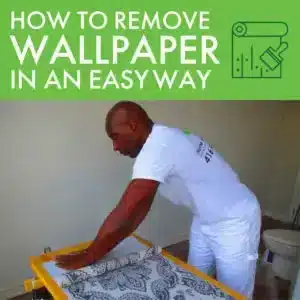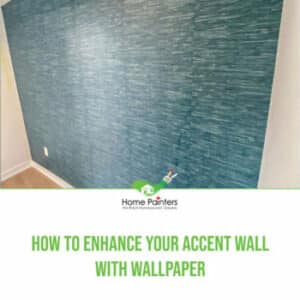
There is a way to paint over wallpaper and have it turn out well
So you’re looking to bring new life into your house? However, you want to get rid of this really old, dreary, outdated wallpaper that has been on those walls for decades! The problem is, you realize the cost of stripping the wallpaper is out of your budget. To make matters worse, you have 70-year-old plaster walls and are in danger of ruining them. What can you do? Should you paint over the wallpaper? Can you successfully paint over wallpaper? There is a process to paint over wallpaper that will leave you with the best results.
Checking the Condition
Before starting to paint the wallpaper, take a look at the condition of the wallpaper. Are any seams sticking out? Are there air bubbles or torn pieces? These imperfections are going to stand out much more once the wall is painted. So it’s always good to make sure that they are taken care of before you begin to paint over the wallpaper.
Painting over textured wallpaper is going to be much more difficult than painting over smooth wallpaper. If you have textured wallpaper, you will want to remove as much of the texture as possible. With sandpaper or a sander before starting your project.
If you are going to ask a painting specialist, you will likely be told that the very best technique is to know how to remove wallpaper. From walls prior to painting. But we cannot deny the fact that there are times when removing wallpaper to paint can, in fact, damage the wall beneath. And impose further damage.
For example, this could happen if the wallpaper was installed over incomplete drywall. So, you have to know how to remove wallpaper from drywall first. Or you may be dealing with removing several layers of wallpaper. Which would make the task much harder.
Plaster All Wall Seams
Wherever the wallpaper is joined and ends are meeting each other, there are tiny lines or seams that show in between the wallpaper. Make sure you plaster these seams from ceiling to floor. Once the plaster is dry, which may take hours, make sure you sand these seams smoothly. So the surface is nice and flat enough for painting.
Hanging Wallpaper or Curling Seams
If certain areas of wallpaper are hanging or curling off, you need to repair these areas as well, before painting over the wallpaper. When the rips and tears are minor, then simply glue those areas back on with wallpaper glue – which is a paste-like adhesive. For areas that are too big and starting to hang down, then you can rip off that particular area. Skim coat plaster along the entire seam to try and blend it in better. Once the plaster is dry, sand it down with fine sandpaper till it is smooth enough for painting.
Scan the entire wallpaper area and continue this process until all wallpaper edges have been repaired.
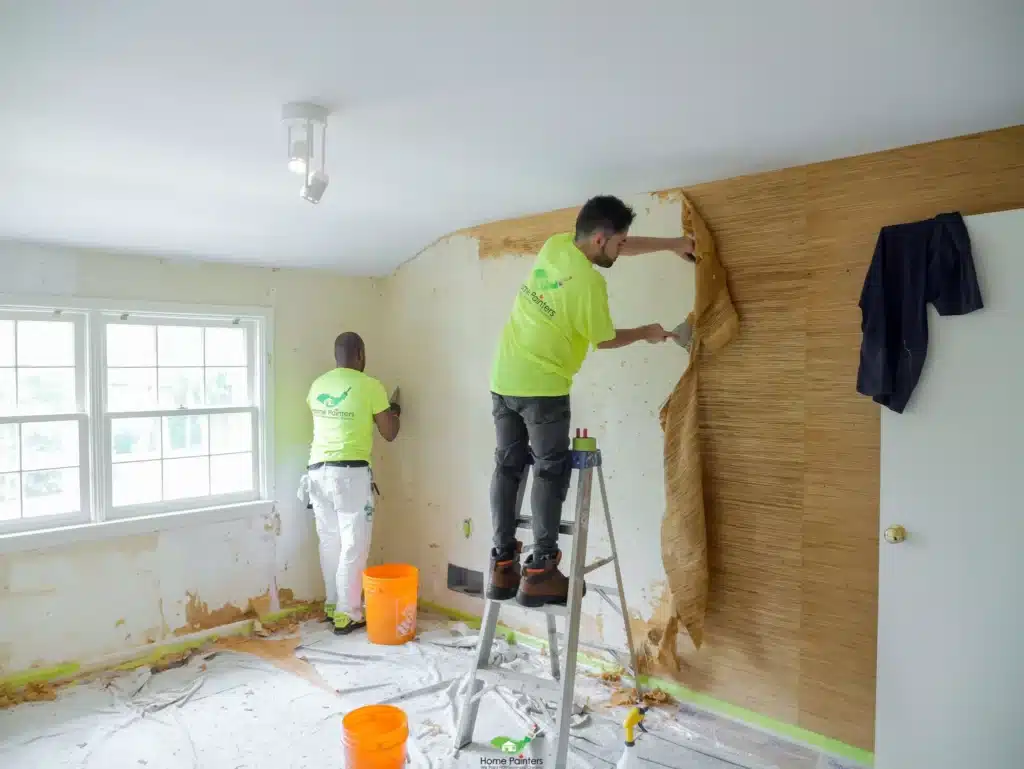
Some wallpaper must not be painted over
That would include wallpaper peeling in several locations and of particular types. Such as painting over vinyl wallpaper. But on the bright side, these kinds of wallpaper are relatively easy to remove. Especially by knowing what is the best wallpaper removal solution. In reality, luckily, the general rule is that the bad prospects for painting over are easy to get rid of. Thus, even with a wallpaper removal steamer, the wallpaper that would be tough to eliminate is a great candidate for painting over.
So, before choosing to leave the wallpaper on your wall, try to eliminate it first. You might also check first how professionals remove wallpaper as your guide. Let your success or failure be your guide. And likewise, removing wallpaper can be a significant inconvenience on your end. Eliminating wallpaper that has been painted over is a lot more substantial inconvenience. The bottom line is that you can paint over wallpaper. With some factors and exceptions that need to be considered. The main secret to a well-painted wallpaper is preparation, which includes finding what is the best primer for painting over wallpaper.
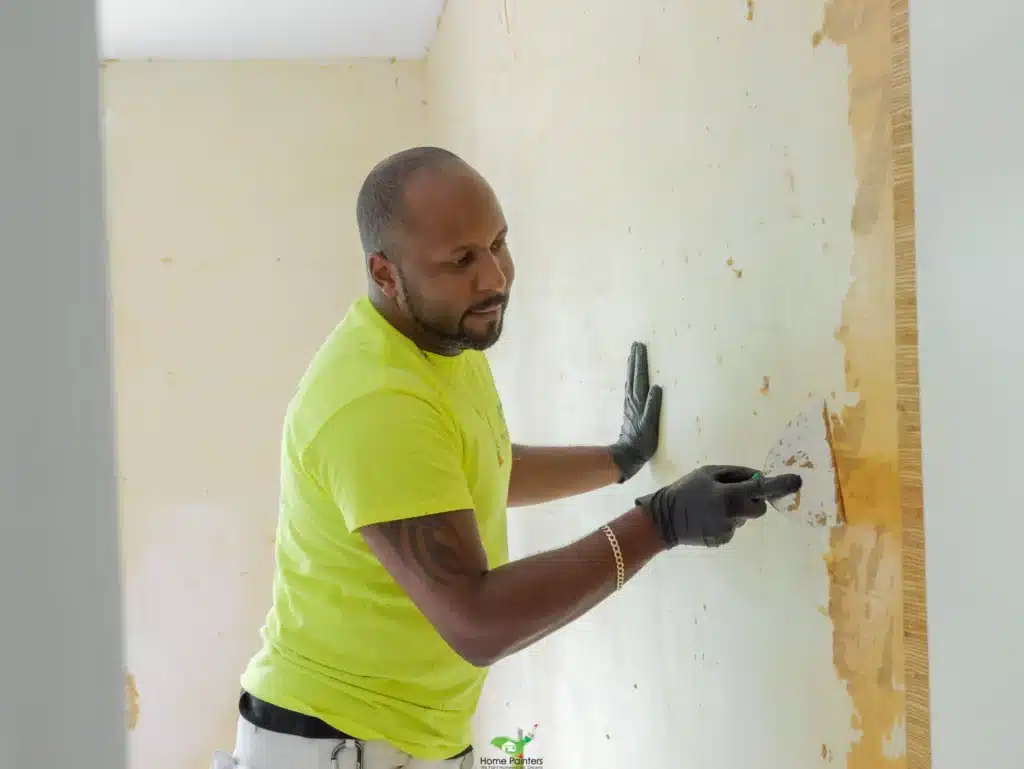
Fixing Imperfections on Wallpaper
If you’ve found any imperfections, go over the imperfections with a layer of spackle, plaster, or joint compound. Once this is done, go over the filler with 120-grit sandpaper to ensure a smooth wall before painting over the wallpaper.
Look for peeling seams and edges, as these are the weakest locations regarding adhesion. Some painting specialists suggest utilizing a thin layer of joint wallpaper adhesive to reattach these loose pieces. Another recommendation is to lift those locations with a thin putty knife and cut the loose bits away. And complete with spackle to develop a level surface area, then sand gently when dry. Suppose the wallpaper has a texture you don’t wish to detect through the paint. In that case, the entire wall must be sanded until smooth, using either a palm sander. With a slightly moist cloth, wipe out all the dust away.
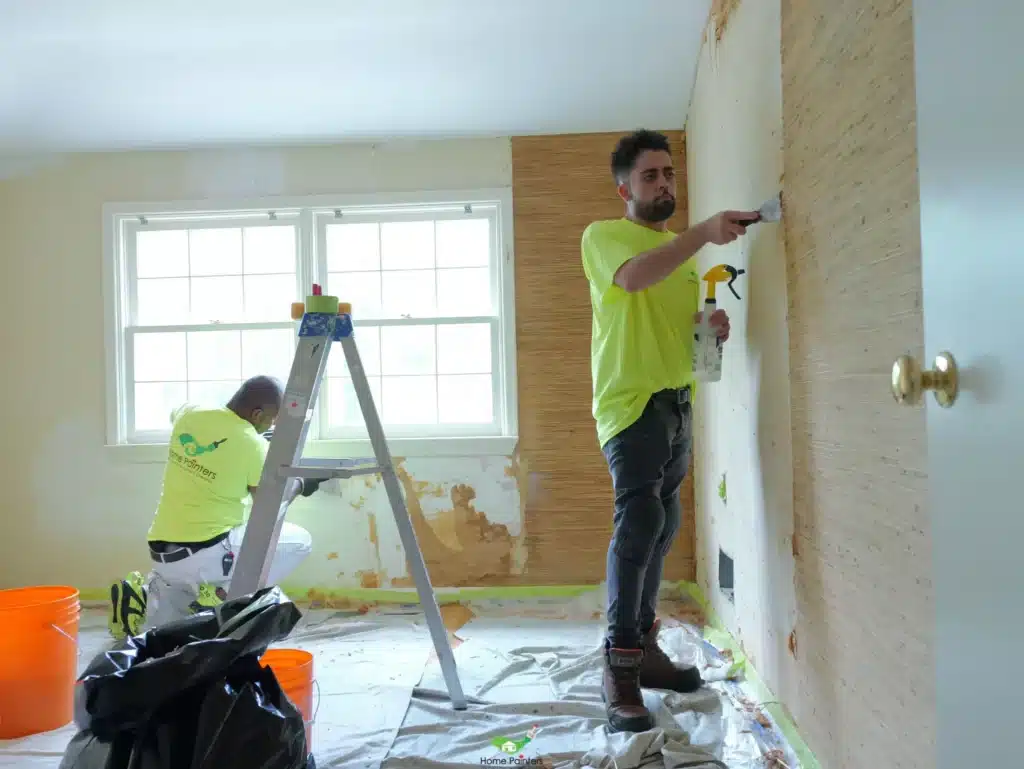
Get Ready to Paint Over the Wallpaper!
When the wallpaper is cleaned up, repaired, and primed, paint it as you would any other surface area in your house. This will be especially needed if the wallpaper has a vibrant pattern or if you use light-coloured paint over dark-coloured wallpaper. Apply your wall paint according to the manufacturer’s specifications. See our blog on “how to paint a wall” for more details. You’re most likely going to require 2 coats of paint to guarantee that the underlying colour will never pop out, specifically if you use paint over dark-coloured wallpaper. Almost always, use the standard of two coats, but read the label and apply more if necessary.
Just take note to let the first coat dry entirely and sand the wall if there are parts that need smoothening. It’s a complicated task but will reduce the little roughnesses. And could considerably enhance the last look of your walls when the project has been finished.
Painting over wallpaper is not impossible, and it should often be done instead of getting rid of the wallpaper and wasting time, money, and effort. As with many house makeovers, the quality of the outcome depends upon the effort applied at the beginning of each project. Thus, preparation and consistency while doing the project until you finish it is the key to a beautiful result.
Home Painters Toronto TIP:
We usually discourage using oil-based paints, but it may be in your best interest to use an oil-based paint instead of a latex-based for some projects. Despite the entire wall being oil-primed, latex-based paints can sometimes find their way through the prime to cause the wallpaper to come loose from the wall.
Latex paints can work but keep in mind if bubbling occurs, you just need to repeat the preparation and repair steps until all the bubbles are gone.
Prepping Wall For Painting
You’ve taken care of all the major imperfections, so it’s time to prep the wall to paint over the wallpaper. Go over the entire wall with an oil-based primer. It’s crucial to stay away from latex-based primers as they may cause the wallpaper to come loose from the wall by soaking through it.
If your project is an older wallpaper, it was more likely to stick to the wall due to the chemical compound called sizing. Which helped protect plaster walls from the moisture of an adhesive. The glue can stain your paint if you do not seal it and pursue painting it. So you need to initially use a shellac-based or oil-based primer before you paint over it.
You’ll want to use an oil-based guide over the wallpaper prior to your painting. Note that oil-based guides can take longer to dry, and the smell will be unpleasant, but some quick-drying choices are now offered. Oil-based primer will block anything coming through, whether there are patterns on the wallpaper or the glue behind it. It will block that, so you can paint right over that. Examine the oil-based primer’s guide and instructions first to ensure it’s suitable with water-based latex paints.
Oil-based Primers Can Be Fantastic
The pungent odour should be a significant factor to be considered. When possible, a shellac-based primer is preferable instead. This is because the smell in shellac-based primers dissipates faster, and it dries in just 15 to 30 minutes. Also, it tends to moisten any bubbles out of the wallpaper due to the fact that it draws the wetness out. No wonder you can definitely use latex paint over this primer.
When using even the best oil-based primer for wallpaper, on the other hand, have mineral spirits on hand. Be ready to clean up any spills and unintentional outside-the-lines moments, in addition to your brushes afterwards. If you use alcohol or shellac-based product, have denatured alcohol on hand to clean up everything while doing the project and the aftermath.
After this is done, check the wall for imperfections again. If any are found, repeat these steps until the wall is smooth.
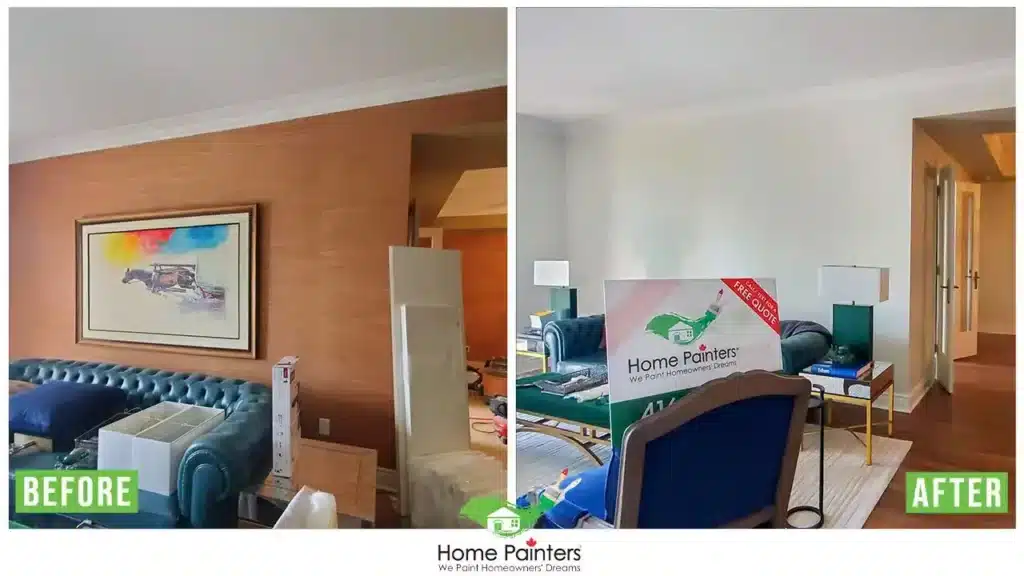
More interesting blogs related to
“HOW TO PROPERLY PAINT OVER WALLPAPER”
Conclusion
In summation, if the budget and time are there, and the walls aren’t too old with plaster issues, it’s always better to strip wallpaper when you can. Stripping wallpaper properly makes for a cleaner and more consistent finish. But painting on top of wallpaper is definitely a possible option when the existing conditions are right for it.
At Home Painters Toronto, we can paint over wallpaper for you. Please call us at (416) 494-9095 or email us at Brian@HomePaintersToronto.com to get a free quote on removing or painting your wallpaper. We look forward to meeting you!
And don’t forget to follow us on all our social channels below as well!


